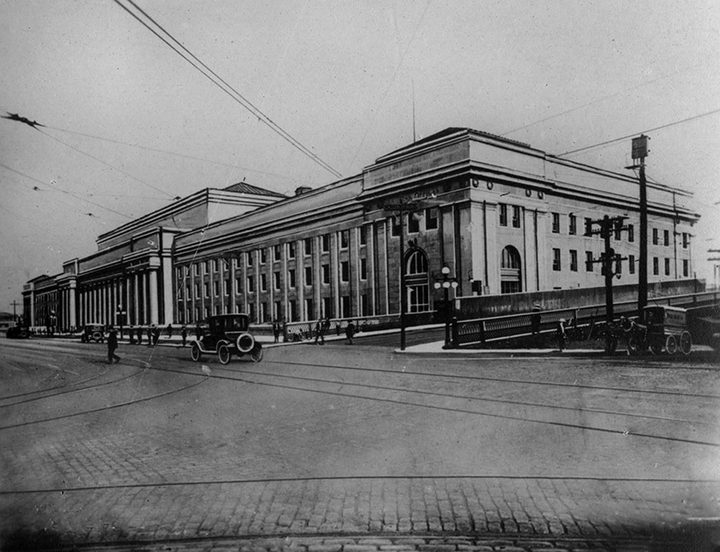Inducted 1999
Situated in Toronto, Ontario, Union Station is known as one of North America’s great railway stations and is a major transportation centre in Canada. The Station is owned and maintained by the Toronto Terminals Railway Company (TTR). It is located on Front Street and occupies and entire block.
Construction of the station began in 1913, but was delayed because of World War I. It was finally complete in 1927 and opened on August 6 by the Prince of Wales, during his royal tour that year. The first passenger train arrived on August 11, 1927.
The structure includes 22 stone columns which are 40 feet tall and weigh 75 tons apiece. The highest point, in the centre of the terminal, is 112 feet high. The Great Hall is the centre of the station with staircases leading to the arrivals concourse. The room is 250 feet long and 84 feet wide. On either side are arched windows 4 storeys high. To show the impact Union Station, and the railroad has made on Canada the Great Hall has names of cities and towns carved in stone around the room. These names are the places where growth and development were stimulated by passenger trains.
In recent years the station has become a terminal for both rail services and a link in the Tonto subway system. It has also been designated a railway heritage structure under the Railway Station Protection Act passed in 1994. TTR facilities in and around Union Station include 25½ miles of track and 4 miles of station platforms.
Union Station is the largest and busiest rail station in Canada with more than 24 million passengers in 1996. It functions as central hub for passenger rail, commuter trains, as well as subway and bus service. The station is also VIA Rail’s busiest terminal with over 50 percent of all of VIA’s arriving and departing passengers using the station. In addition, over 120,000 commuters use the Greater Toronto Area’s GO Train service every day to get to work in the around Toronto.


